Two of my friends are struggling to find good used cars under $4,000 in this tough car market, so they reached out to me for help. I’ve come up with a strategy that will take a bit of sacrifice, but will ultimately result in my friends getting reliable machines for dirt cheap. Here’s that strategy.
My brother’s girlfriend needed cheap transportation a year or so ago, so she bought an automatic Ford Focus from a friend. When they asked me my thoughts, I said: “Well, it’s a good deal since it’s cheap, but as soon as I get down there, let me service that transmission.” Fast forward to a few weeks ago (this was before I could visit): The car’s transmission went out, and my brother’s girlfriend is staring down the barrel of a $2,000 repair bill. Gulp.
She bought the car cheap, so she’ll probably break even when she sells it. And yes, she’s going to sell it after it’s repaired, because she — like so many of my friends over the years who have been let down by their vehicles — feels betrayed. And like in human relationships, it’s very hard to come back from a betrayal. So the Focus has to go, and something has to take its spot.
I also have another friend who just moved to Albany and needs a vehicle. She’s been renting at a price of $3,000 per month (gulp again!), and I simply cannot allow that to continue, on principle. She asked if I could help her find something cheap. Fueled by the challenge, I hit Facebook Marketplace and Craigslist.
The Stick Shift Is The Way

As someone who’s been researching cars non-stop for decades, I’ve got a good idea for which cars will hold up and which won’t. Obviously, maintenance is often an unknown, but with all things being equal, there are still certain engine/drivetrain designs that lend themselves to longer lives than others.
I’ve found manual transmissions to be more reliable than automatics, especially when we’re talking about four-speed automatics designed by American automakers in the 1990s and 2000s. Some four-speeds, like Aisins found in Jeeps and Toyotas, will outlast earth, but many won’t. And while there are manual transmissions that have longevity issues, usually it’s just the clutch and clutch hydraulics that give out before 200,000 miles — and those are pretty easy to fix. Heck, even if a manual transmission’s internals fail (bearings, synchros, gears), rebuilding a manual is really not a huge deal.
Go For Vehicles Whose Customers Generally Hate Stick Shifts
Add to this the fact that manuals are generally cheaper since so few people are willing to drive them, and you can see why I’m only looking into manual transmission vehicles for my brother’s girlfriend. To be more specific, I’m looking at manual transmission crossovers. Why? Because of all people on this green earth, nobody is as averse to driving stick shifts as crossover shoppers. People who buy crossovers are sacrificing so much for a high driving position and utility; their focus is on practicality, not joy. They want a car that is big enough, tall enough, not too bad on gas, and that will get them from A to B. There’s a reason why so few crossovers in history have come with manuals.
But there were some.
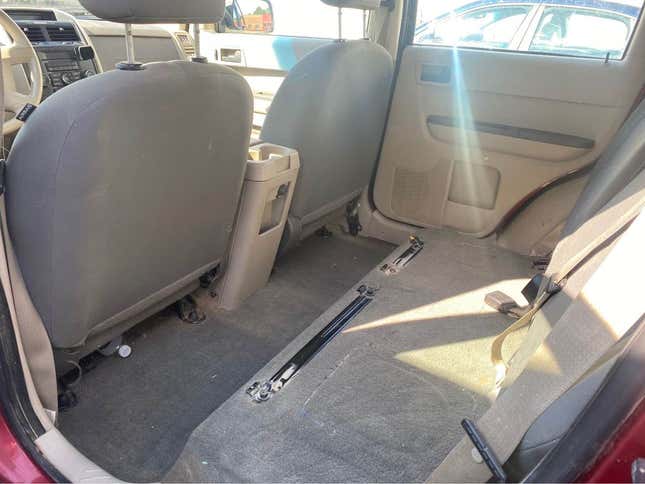
Take this $2,399 2009 Ford Escape XLS. It’s got a Mazda G5M five-speed manual hooked to one of the most reliable Japanese engines of this millennium: The “Mazda MZR,” referred to by Ford as the “Ford Duratec 25.”
It’s the same engine found in millions of Mazda 3s, and it is simply unkillable, in part because it’s a highly understressed motor (i.e. underpowered — it makes about 165 to 175 horsepower) with a timing chain and very few frills.
Mate that tough motor to a basic five-speed, and you’ve got something that should never die. And yet, nobody wants it because of that stick shift; you can tell by how the seller has to reiterate that this does not have an automatic:
Just in a 2009 Ford escape XLS manual transmission stick shift runs and drives good has 169K miles Good tires Good battery 
Again this is not a automatic transmission
Back seat is missing
Get Something That Needs A Bit Of Work
The missing backseat is also a godsend, because it reduces the vehicle’s value, though it’s something that can be easily mended. Any local junkyard probably has ten Ford Escapes in it.
Look at how many my local junkyard has:
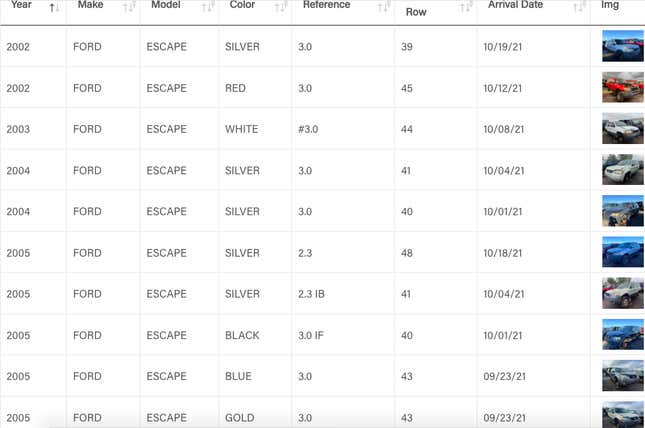
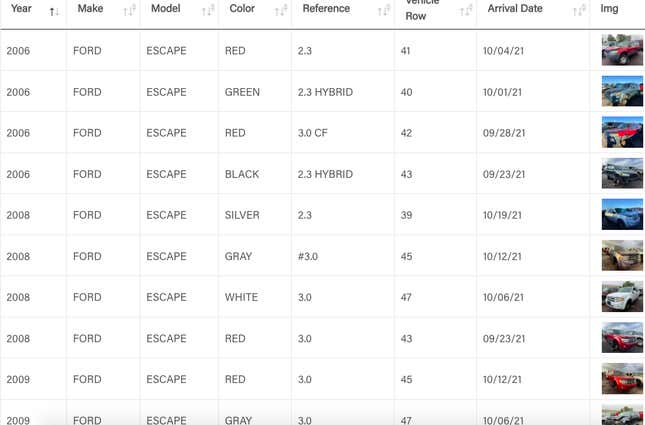
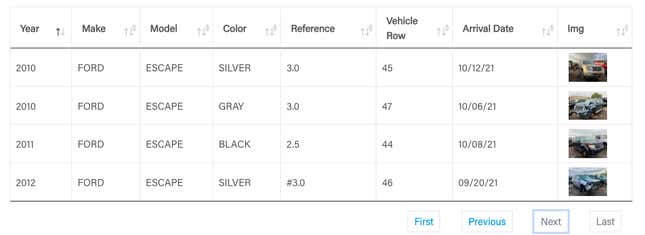
Hell, there’s even a 2009 in red!:
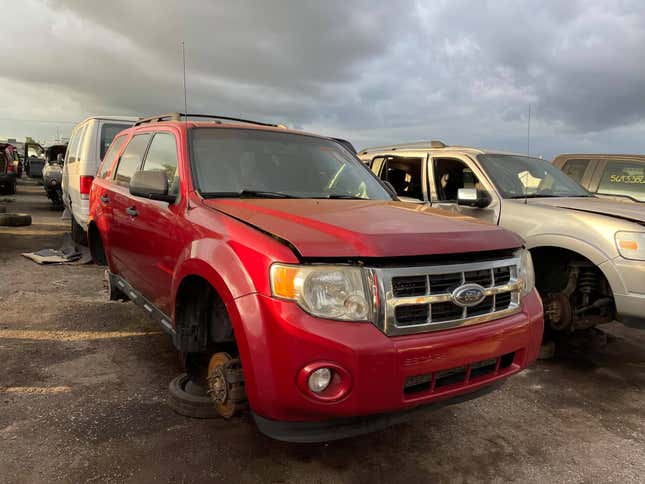
I called the dealership selling that Escape; the salesman also mentioned a bad wheel bearing — something that should be an easy fix for me, but a real annoyance to a potential buyer without mechanical skill (though even a shop wouldn’t charge under $1,000 for a bearing).
But wait, there’s more. Check out this manual transmission Saturn Vue for sale for only $2,000:
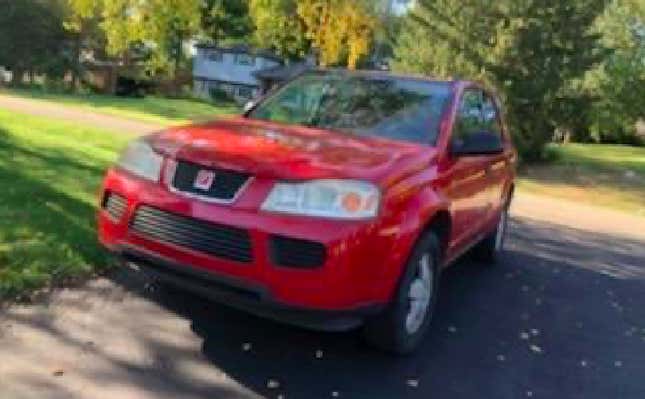
It’s outfitted with GM’s 2.2-liter Ecotec inline-four, an excellent engine that is known to last well over 200,000 miles (especially post-2003 models, which don’t have the timing chain lubrication problems found in earlier Ecotec 2.2s). The transmission is a Getrag F23 five-speed, a highly reliable transmission, though it will eventually use a clutch and a hydraulic slave cylinder.
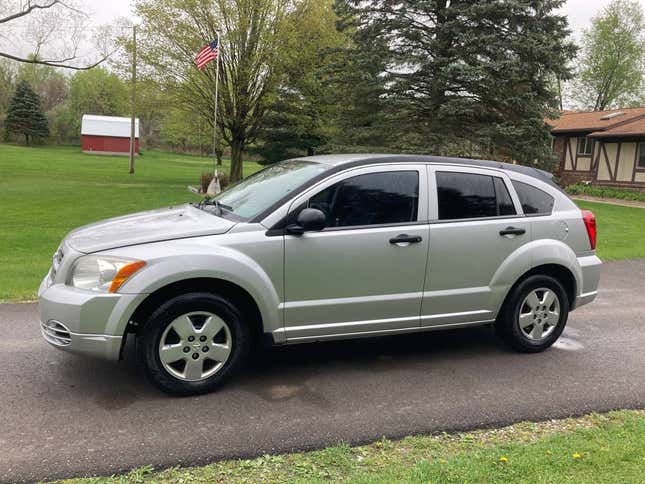
Now check this thing out. It’s a 2007 Dodge Caliber in what looks like immaculate shape (other than the ding on the rear door). The seller is asking $3,900; I wouldn’t pay that, but if I could snag it at $3,000, that’d be a deal and a half. The 2.0-liter World engines in these Calibers are remarkably stout, and I don’t expect that transmission to cause any trouble, either. There will be steering and suspension issues as with most older cars, but like the wheel bearing that I mentioned earlier, these are cheap and easy things to mend.
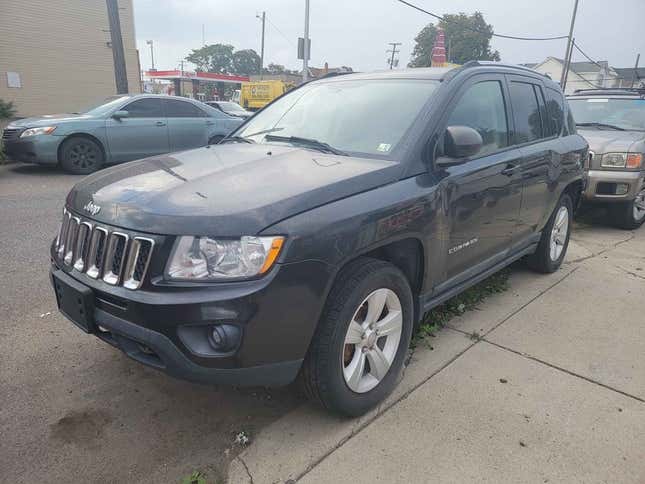
Now look at this $1,500 Jeep Compass. It’s in nice shape, but my god is it inexpensive. Why? Because it needs a clutch — a job that a decent wrencher could do in a weekend for $200. Once that’s done, the Jeep will probably hold up quite well for years to come.
Don’t Get Too Freaked Out By Mileage
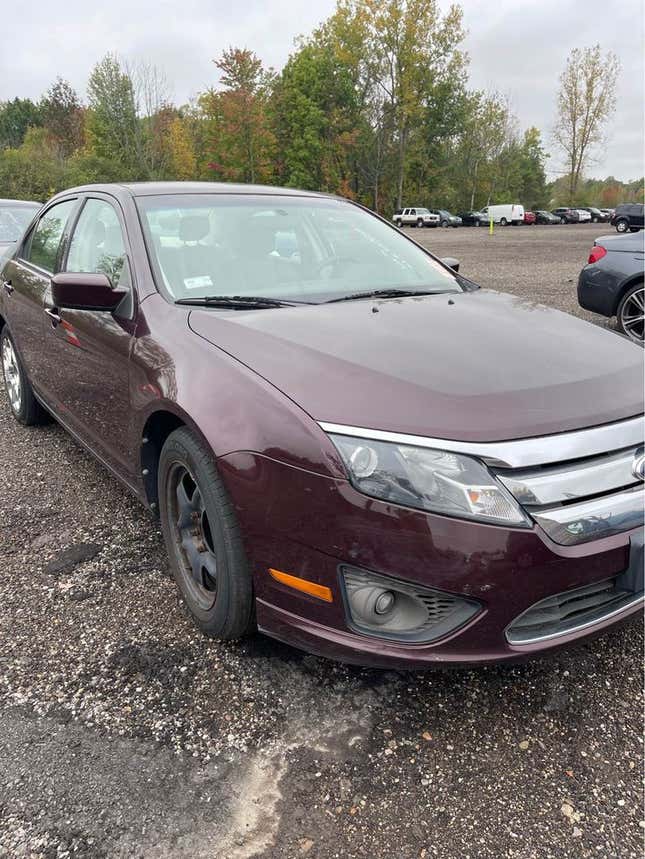
Then there’s this Ford Fusion, which is for sale for only $2,900. Sure, it has high mileage, but it’s got the same Duratec Mazda-designed engine as the aforementioned Escape. That engine should last well over 200,000 miles, and so should that manual transmission (which is actually a six-speed, unlike the Escape’s five). That’s the thing about high-mileage cars: if they’re built on well-engineered bones, and they’ve been reasonably maintained, they’re still worth looking at, and can provide some real value. (Again, have a shop take a look if you don’t trust your judgement).
This car fits into the same category as crossovers: People who buy Ford Fusions probably don’t want to row their own gears; they barely want to drive. This is a very “sensible” car, and sensible doesn’t go along with “stick shift.”
Anyway, there are obviously other ways to find good deals — networking and buying from friends is a great one. Also, I’ll mention that those of you who demand an automatic and who don’t want to do any work to your vehicle probably won’t benefit as much as those who are a bit more open to making these minor sacrifices. Plus, another caveat: Like most used car-buying strategies, mine still has some risk, as whom you buy the car from (and the vehicle’s maintenance history) is a major factor. Luckily, I’m well-versed in assessing vehicles, but if you aren’t, I’d suggest you bring the car to a trusted mechanic.
If you do that, then my plan will probably serve you well: Do research into engine/drivetrain reliability (forums are usually great resources to hear from owners), go for the stick shift version of a mundane car (ideally a crossover), and look for something that has some minor faults that you can easily mend. Follow that guide, you’ll likely end up with unkillable, dirt-cheap transportation.